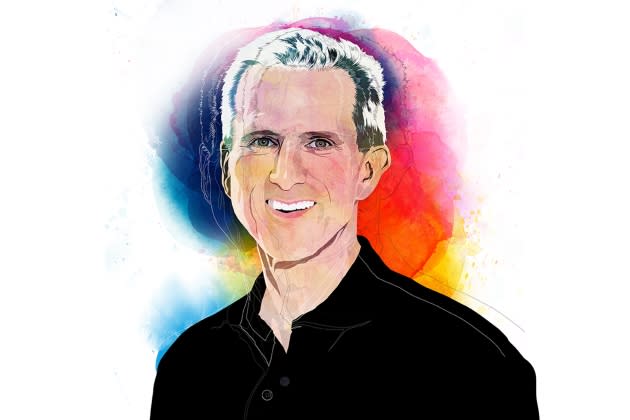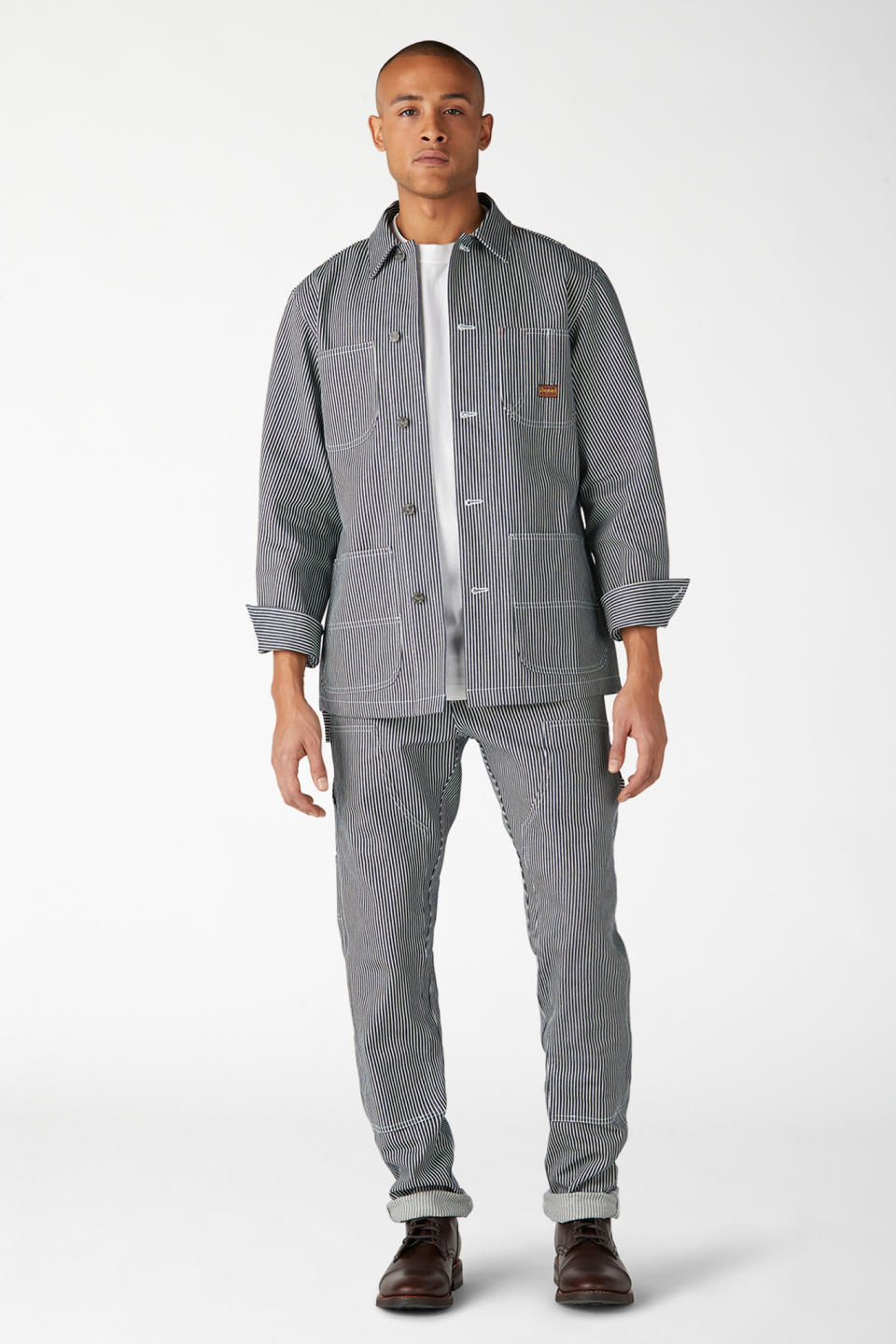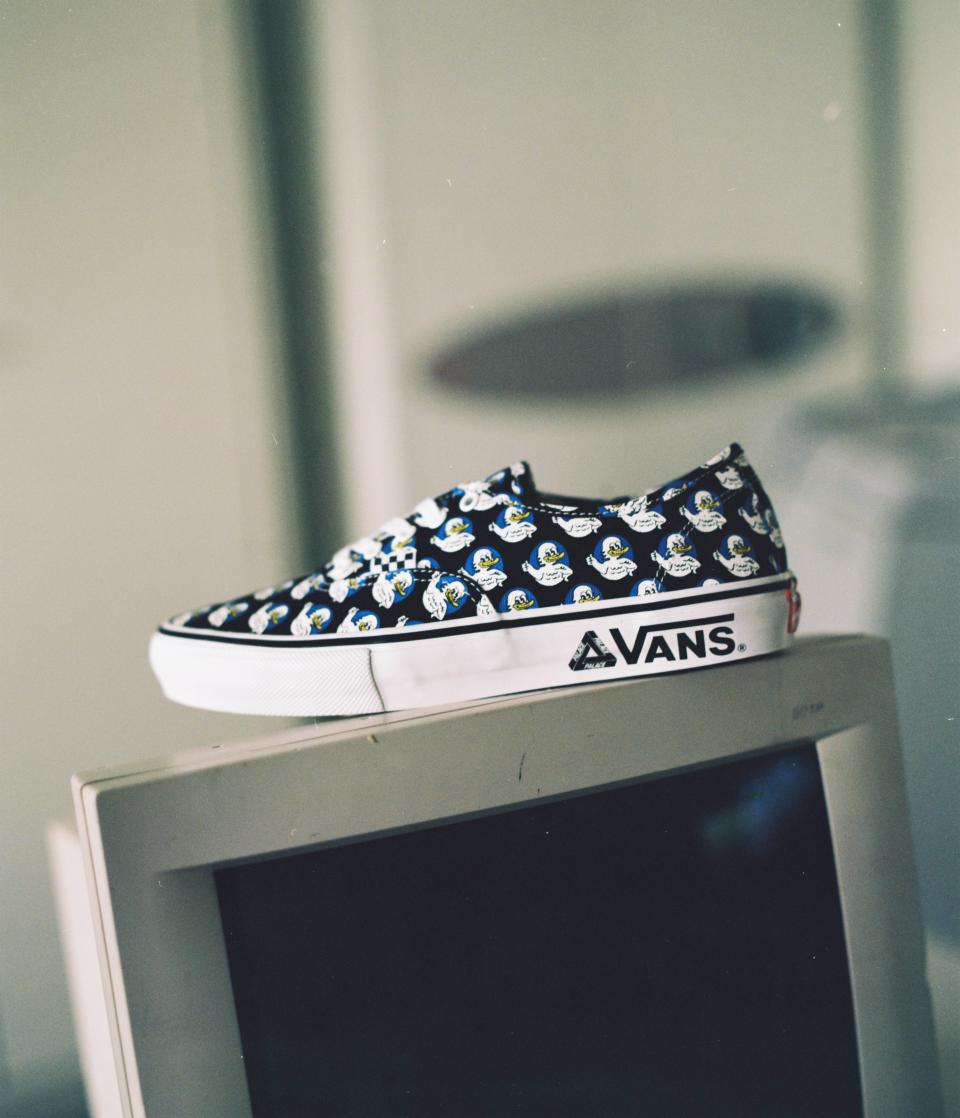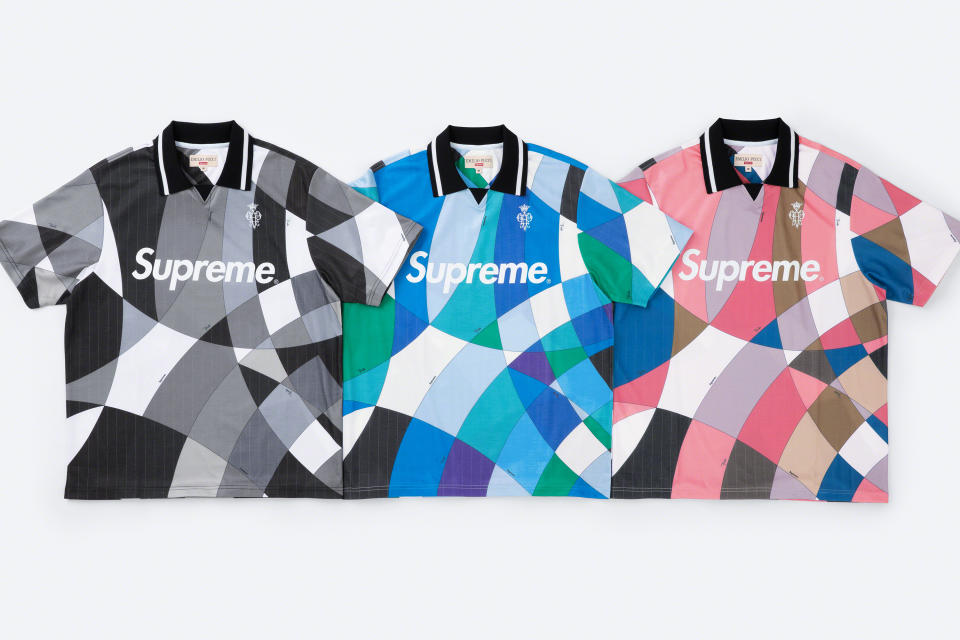WWD Honors: For Creative Leadership, VF’s Steve Rendle

When COVID-19 hit and sent the world scrambling, Steve Rendle, chairman, president and chief executive officer of VF Corp., did what he does — crafted a fast-moving and multipart solution to a complex problem and put it all into a simple framework.
In May 2020, during some of the darkest days of the pandemic, Rendle was walking analysts through how VF was “managing the now” and “how we intend to capitalize on the next.”
More from WWD
“I’ve never been more confident in our people, our brands and our future,” the CEO told Wall Street in his first quarterly conference call from lockdown. “It’s times like these that serve as a purifying fire, separating the best companies from the rest.
“We have prepared ourselves well for a time such as this,” he said. “Our strong brands, our financial and supply chain disciplines, coupled with our fortress balance sheet, allows us to weather almost any storm.”
The now/next construct became his rallying cry for VF, which stayed strategic through the pandemic, avoiding the furloughs and layoffs that came to so many competitors and then — when no one was looking for it — snapped up Supreme in a $2.1 billion-plus deal.
“We knew the pandemic had a beginning and an end, but we knew we’d come out the other side, Rendle said in an interview ahead of the WWD Honors ceremony, where he will virtually accept the Edward Nardoza CEO Creative Leadership Honor. He is the fifth fashion executive to receive the WWD Honor for Creative Leadership, joining past winners including Ulta’s Mary Dillon, PVH’s Manny Chirico, Gucci’s Marco Bizzarri and Dior’s Sidney Toledando.
“VF at the time was growing high single, low double digits and our earnings growth was in the high teens,” the CEO said of the period right before the pandemic.
That profile was hard won and reflected a series of dramatic changes he made since taking the helm in early 2017.

Courtesy Photo
Under Rendle, VF bought Dickies as well as Supreme, moved its corporate headquarters to Denver from Greensboro, N.C., and spun off its Lee and Wrangler denim businesses into Kontoor Brands Inc. The overall effect was to focus the company all the more on the powerhouse Vans, The North Face and Timberland brands while developing the next generation, such as Dickies and Supreme.
The reset was “showing the outcomes that we expected,” Rendle said, giving him confidence heading into the pandemic.
“We knew our vision for this company was accurate,” he said. “We needed to find a way to preserve that.”
That meant treating employees — including store associates and workers in the distribution centers — as just as vital as investments in fancy new technologies.
The company enjoyed a strong financial position heading into the crisis, but the pandemic was still a challenge from top to bottom and forced some kind of soul searching at VF — as it did at every company.
“We were tested,” Rendle said. “Did we believe in our strategy? The acquisition of Supreme at a time when no one expected it was confirmation of our strategy and the reshaping of our portfolio and really pulling it together.”
The now/next approach to the pandemic is emblematic of how Rendle operates and bears the mark of the decade he spent in sales at W.L. Gore early in his career, when the company’s famously flat corporate structure left an impression.
“I thrived inside that culture,” Rendle said, noting that there really were no titles in the structure and the focus was instead on making a contribution. “Much of my approach was formed in those 10 years at Gore.”

Courtesy
Rendle took that approach — heavy on a certain kind of emotional intelligence and contribution — to the rest of his career and eventually The North Face, which he joined in 1999 and quickly became vice president of sales.
That was followed by a series of bigger jobs, including president of The North Face in 2004, president of VF’s Outdoor Americas Coalition, president and chief operating of the whole company and then his current gig.
“I live in a world of titles and titles do define a role, but I think leadership is something that’s earned,” Rendle said, keeping the spirit of Gore’s approach alive. “Good leadership is — people follow individuals. Cast a vision, articulate it.
“This ability to have a vision and being able to articulate it in a way and activate in such a way that people galvanize around it and they begin to follow and as they begin to follow you, empowering people to drive the actions — when that works, it’s a real magical place to be,” he said. “You’re constantly looking at that team dynamic.
“People are a big part of it,” he said. “As you get in that CEO role, your ability to get yourself into the nitty detail certainly is different and you really are about casting that vision, assuring that you have a well-architected strategy. It’s about, do I have the right people in the right roles?”
That takes a good bit of feel for the personalities involved.
“In any culture, there is an emotional element that good leaders are attuned to,” he said. “I don’t mean everything has to be perfect. We’re human and we don’t mesh every day of the year. You can tell when there’s synergy” in a team.
It’s a hands-on approach that Rendle has had to learn to apply through a screen as COVID-19 kept people at home and, at times, across the country.
“To lead behind a camera was new to me,” Rendle said. “I’m someone who really values being in person, being able to travel, being able to touch people in small groups with more intimate connections. It was not easy to do. We learned and we did it, but I think that was a big test to me as a leader, me as a person — being able to come to work every day and be that leader that had that optimism, maintained the vision and could, while being honest and truthful where I was at.”

And Rendle in particular values a certain straightforwardness.
Shortly after getting the top job at VF, he published an article on LinkedIn detailing the five attributes that make a strong leader.
Number one? Candor. (Followed by commitment, empowerment, collaboration and accountability).
“Leaders must be unafraid to have open, honest discussions about topics that may be uncomfortable,” Rendle wrote. “Difficult conversations are important, and when we are willing to be candid and authentic with one another, we can more quickly get back on the path toward achieving our shared goals.”
Expanding on that in the interview, Rendle said the key is to have honest conversations that don’t put anyone on the offensive.
“Before you act with candor, you should approach life with empathy,” he said.
That understanding of the other party leads to good things.
“It’s important for teams to work synergistically, it’s important for employees to see leaders be able to solve issues together and come out the other side with the solution,” he said. “That’s a learned behavior, to have honest conversations that can be done in a constructive way, that can arrive at a decision that you can agree with.”
For Rendle, the trick is balancing the day today — “Today, we all need to really obsess about the basics,” he said — with one or two big ideas that can lead to big changes for the company.
“You’ve got to think boldly because so many of us are doing the same things,” he said. “The playbook, we all talk about it enough, if we didn’t know it, we could pick it up and bring it in. Those companies that are being bold are bringing new innovative ideas that allow them to find the growth vectors.”
The CEO pointed to the trimming of the VF portfolio — which has gone from 32 brands down to 12 in recent years — the move into streetwear with Supreme, the move to Denver and a shift in China, which saw the company’ headquarters there move to Shanghai from Hong Kong, as examples of bold thinking.

Courtesy of Emilio Pucci
At VF, it’s now about realizing the company’s past dreams — turning both Dickies and Supreme into billion-dollar brands, developing the smaller, but growing Smartwool, Icebreaker and Altra — while thinking big for the future.
In the meantime, VF is back in growth mode. Second-quarter revenues increased 22.6 percent to $3.2 billion from $2.6 billion a year earlier. Net income for the three months ended Oct. 2 rose 81 percent to $464.1 million, or $1.18 a diluted share, compared with $256.7 million, or 66 cents a year ago, when the first coronavirus lockdowns took a big bite out of the business.
And VF remains on the watch for acquisitions that fit into its outdoor and active themes.
With a market capitalization of more than $27 billion and sales set to hit $12 billion this year, the closely watched company has a lot of options on where to go next.
And preparing for that next was all a part of Rendle’s plan for the crisis.
More from WWD:
Macy’s Fighting to Keep Herald Square Billboard From Amazon
In Fashion: Next Generation Control Freaks With a Dream
The Spin-off Potential: Saks as Dot-com Test Case
Sign up for WWD's Newsletter. For the latest news, follow us on Twitter, Facebook, and Instagram.

